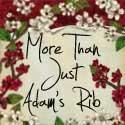 How are you spending your dash? You know, that simple punctuation that spans a life, a line flanked by end caps reflecting the day you were born and the day you die? Your dash.
How are you spending your dash? You know, that simple punctuation that spans a life, a line flanked by end caps reflecting the day you were born and the day you die? Your dash.Just last week, I visited Arlington Cemetery where my brother serves as a Navy Chaplain. Freezing snow or blazing heat, he conducts memorial services, funerals for servicemen young and old who have added that final bookend to a life.
While many times, the families will tell him information about the deceased, he doesn't always know much about their dash.
Their tombstones don't reflect much of that life either. Most reflect the two dates, military rank, perhaps the war they fought in, and sometimes a spouse's name. At the top might be a cross, a Jewish star, or other symbol to indicate their claim of a particular belief system.
As I looked around at the thousands of near-identical tombstones in lines endless to the vanishing point, I couldn't help but wonder about the legacy each man and woman left behind, what stories their lives could tell beyond the simple black and white.
Did they pass the hours seeking to make as much of a difference as they possibly could? Or did they live with a Scarlett O'Hara syndrome, always putting off till tomorrow?
***
On this day, the children and I stood respectfully at a distance (literally behind a tree) with Aunt Liza while Johnathan conducted the grave-side portion of a service.
We watched the horse-drawn wagon with flag-draped casket creep solemnly down the hill to the gaping hole of exposed earth. The twins covered their ears for the twenty-one gun salute. And I felt my chest tighten, as always, when I listened to the soulful trumpeting of Taps, the full band playing our nation's anthem.
 Afterwards in his thirty minute break before preparing for the next service, my brother showed us a map of the entire cemetery, pointed to which sections were already full, discussed tentative expansions.
Afterwards in his thirty minute break before preparing for the next service, my brother showed us a map of the entire cemetery, pointed to which sections were already full, discussed tentative expansions.There is never any shortage of deaths and burials. But I fear that with so much opportunity to waste our time in meaningless pursuits, there are a shortage of lives that truly make a difference.
It's so easy to let the small things eat away at each day like a parasitic leach. Even in my own life, I find myself daily fighting to make the minutes count.
Each choice I make is to fill my dash with something worthwhile or something worthless.
There is really no grey area in between. Worthwhile or worthless.
That line on my tombstone may not reflect a life well-lived for Christ, but I can be sure it is a well-lived one nonetheless, one that truly made a difference in the life of others and in the kingdom.





 The closer I creep to forty, the more I see time's etchings on my physical body. Just last week, I looked down at my hands to discover the rivers of raised blue veins and caterpillar-wrinkled knuckles more pronounced than I remembered. As my daughter touched a scar, I thought, "These are my mother's hands."
The closer I creep to forty, the more I see time's etchings on my physical body. Just last week, I looked down at my hands to discover the rivers of raised blue veins and caterpillar-wrinkled knuckles more pronounced than I remembered. As my daughter touched a scar, I thought, "These are my mother's hands." The trees were glorious, a solid ring of pink and white surrounding the lake in front of the Jefferson Memorial. Some branches were covered so densely in blossoms, it was impossible to see the woody branch beneath the fluffy petals; one simply had to trust by faith that the underlying structure was there.
The trees were glorious, a solid ring of pink and white surrounding the lake in front of the Jefferson Memorial. Some branches were covered so densely in blossoms, it was impossible to see the woody branch beneath the fluffy petals; one simply had to trust by faith that the underlying structure was there.
 Each time a bird lit on a branch, the petals would shake down like pale snow, reminding me that such beauty is fleeting. Yet, whether
Each time a bird lit on a branch, the petals would shake down like pale snow, reminding me that such beauty is fleeting. Yet, whether 














